Guide H-429
Jason Fechner, Miranda L. Kersten, Ashley B. Bennett
College of Agricultural, Consumer and Environmental Sciences, New Mexico State University
Respectively, Graduate Assistant, Department of Plant and Environmental Sciences; Senior Program Specialist, Agricultural Science Center at Los Lunas; Former Small Urban Farm IPM Specialist, Department of Extension Plant Sciences. (Print Friendly PDF)
Young Park, located at 1905 E. Nevada Ave. in Las Cruces, NM, is home to many tree species. You can use this guide, along with the trees found in Young Park, to help you learn about tree identification. Examine each tree’s leaves, bark, and shape. Each of the described trees can be found with the location map (Figure 1). A glossary at the end of this guide defines many terms related to plant identification.
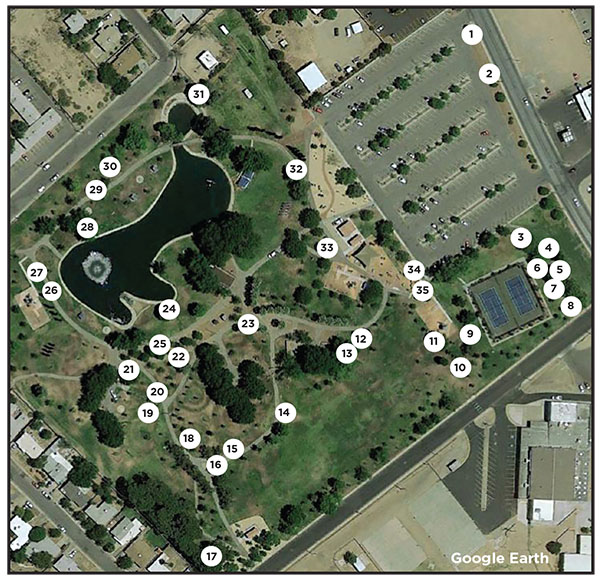
| Number/Common Name | ||
|
1. Crape myrtle 2. Texas mountain laurel 3. Arizona sycamore 4. Texas red oak 5. American sycamore 6. Gambel oak 7. Chinquapin oak 8. Rocky Mountain juniper 9. Japanese black pine 10. Bur oak 11. Afghan pine 12. Raywood ash |
13. Chaste tree 14. London plane tree 15. Chinese juniper 16. Crabapple 17. Italian stone pine 18. Lacebark elm 19. Desert willow 20. Mexican white oak 21. Mulberry 22. Southern live oak 23. California fan palm 24. Arizona ash |
25. Chinese pistache 26. Italian cypress 27. Callery pear 28. Pecan 29. New Mexico olive 30. Honey locust 31. Arizona cypress 32. Lanceleaf cottonwood 33. Netleaf hackberry 34. Mexican sycamore 35. Cedar elm
|
Figure 1. Tree locations within Young Park, Las Cruces, NM. Tree numbers are ordered as they appear in the guide. Aerial imagery from Google Earth.
1. Crape myrtle (Lagerstroemia indica)
Leaf: Opposite, simple, short petioles, dark green, 1–2.5 in. (2.5–6.3 cm) long
Fall color: Red, red-orange, yellow
Flower color and season: White, pink, red, purple; summer
Key ID characteristics: Short stature with pie-shaped seed pods and smooth gray or light brown peeling bark that reveals a pinkish inner bark
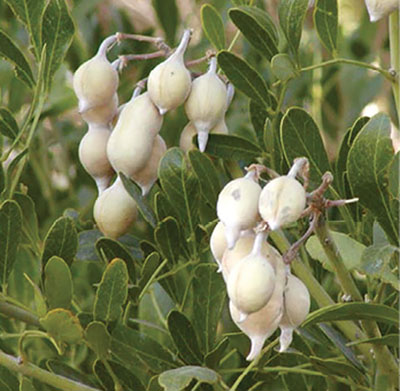
Figure 2. Texas mountain laurel seed pods (photo by S. Shebs, Wikimedia Commons).
2. Texas mountain laurel (Sophora secundiflora; Figure 2)
Leaf: Alternate, odd pinnate compound leaf with three to five pairs of 1–2 in. (2.5–5 cm) long oval-shaped leaflets
Fall color: Evergreen
Flower color and season: Purple; early spring
Key ID characteristics: Light gray pubescent seed pods, short stature, evergreen
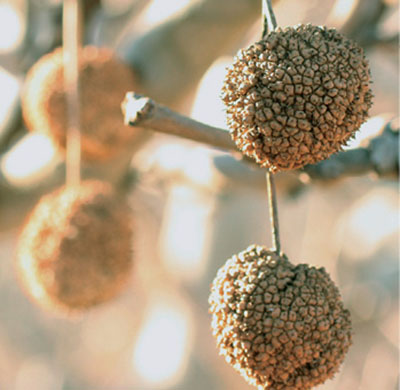
Figure 3. Arizona sycamore fruits may occur in clusters of one to four (photo by L. Seaton, Wikimedia Commons).
3. Arizona sycamore (Platanus wrightii; Figure 3)
Leaf: Alternate and simple, pubescent, 6–9 in. (15.2–22.8 cm) long, with three to five deep lobes
Fall color: Golden brown
Flower color and season: Green; late spring
Key ID characteristics: The fruits are stalked, spikey seed balls in clusters of one to four; bark is smooth and flaking, mottled gray to white in color
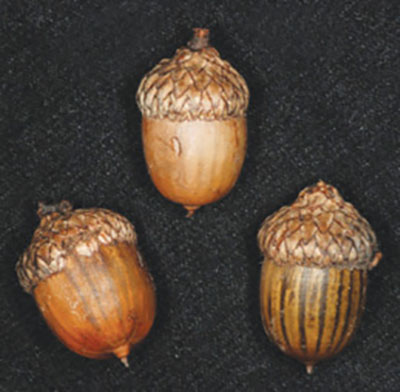
Figure 4. Texas red oak acorns (photo by D. Goldman, hosted by USDA–NRCS PLANTS Database).
4. Texas red oak (Quercus buckleyi; Figure 4)
Leaf: Alternate, simple, 2.5–5.5 in. (6.3–14 cm) long and 2–4 in. (5–10.1 cm) wide, with three to five sharply pointed lobes
Fall color: Red-brown
Flower color and season: Yellow-green (male), red-brown (female); spring
Key ID characteristics: Light brown scaly bark when young, dark gray bark with scales and deep fissures at maturity; acorns are egg-shaped, reddish-brown, 0.75 in. (1.9 cm) long, top one-third covered by a cup-shaped cap
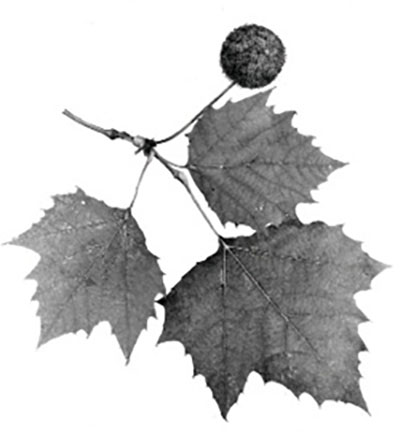
Figure 5. American sycamore fruits occur singly (photo by W.D. Brush, hosted by USDA–NRCS PLANTS Database).
5. American sycamore (Platanus occidentalis; Figure 5)
Leaf: Alternate, simple, serrated margin, pubescent veins, 4–8 in. (10.2–20.3 cm) wide, medium green
Fall color: Yellow-brown
Flower color and season: Red; spring
Key ID characteristics: Fruits occur singly; bark smooth and flaking, with mottled creamy white colors
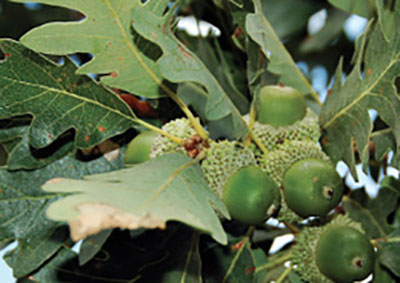
Figure 6. Gambel oak leaves and acorns (photo by C. Maylett, Wikimedia Commons).
6. Gambel oak (Quercus gambelii; Figure 6)
Leaf: Alternate, simple, 3–7 in. (7.6–17.8 cm) long, oblong with seven to nine deep smooth lobes, dark green above, pale green and densely hairy beneath
Fall color: Yellow to reddish orange
Flower color and season: Yellow/green; early spring
Key ID characteristics: Bark is gray and rough, acorn is about 1 in. (2.5 cm) with a cap covering about 1/3 of nut, shrubby growth habit can form thickets
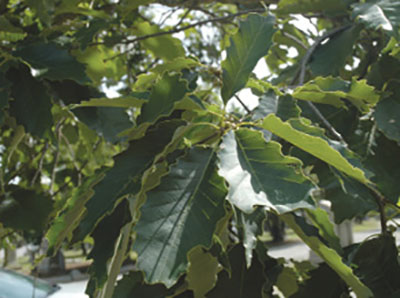
Figure 7. Chinquapin oak leaves (photo by B. Kirchoff, Wikimedia Commons).
7. Chinquapin oak (Quercus muehlenbergii; Figure 7)
Leaf: Alternate, simple, oblong shape, 4–6 in. (10.2–15.2 cm) long, shiny green upper surface, course shallow teeth each ending in a small point
Fall color: Yellow, orange, burgundy
Flower color and season: Yellow-green; spring
Key ID characteristics: Light gray scaly bark, prominent veins on leaf underside
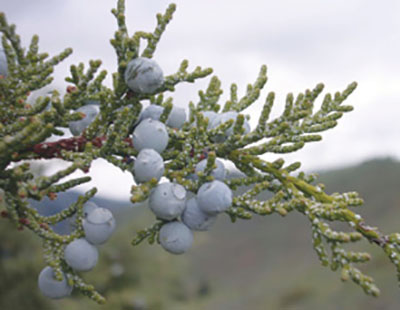
Figure 8. Berries and leaves of Rocky Mountain juniper (photo by T. Tuason, Wikimedia Commons).
8. Rocky Mountain juniper (Juniperus scopulorum; Figure 8)
Leaf: Scale-like, pressed closely to branches, 0.13 in. (0.3 cm) long, gray to blue-green
Fall color: Evergreen
Flower color and season: Yellowish; spring
Key ID characteristics: Round, waxy, blue berry-like cones less than 0.5 in. (1.3 cm) in size
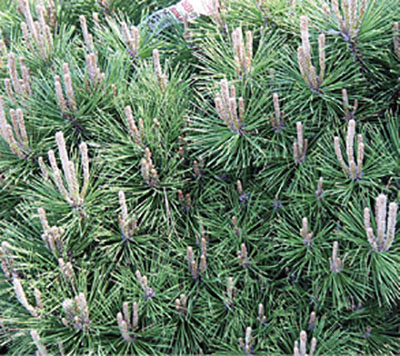
Figure 9. Candle-like buds on a Japanese black pine (photo by D.J. Stang, Wikimedia Commons).
9. Japanese black pine (Pinus thunbergii; Figure 9)
Leaf: Two needles per fascicle, 3–5 in. (7.6–12.7 cm) long, stiff, slightly twisted, dark green
Fall color: Evergreen
Flower color and season: Reddish; spring
Key ID characteristics: Twisted shape to tree, white to silky white candle-like buds
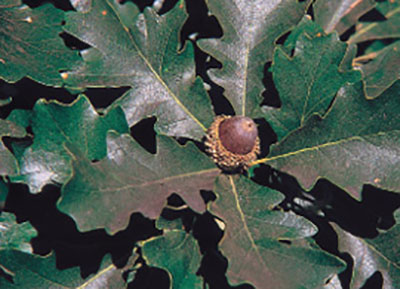
Figure 10. Bur oak leaves and acorn (photo by USDA–NRCS PLANTS Database / Herman et al. [1996], North Dakota tree handbook).
10. Bur oak (Quercus macrocarpa; Figure 10)
Leaf: Alternate, simple, 8–10 in. (20.3–25.4 cm) long with five to seven deeply cut and rounded lobes
Fall color: Yellow-brown
Flower color and season: Green; late spring to early summer
Key ID characteristics: A large 1–1.5 in. (2.5–3.8 cm) cap with a burred fringe covers the acorn, one very deeply cut lobe near leaf center
11. Afghan pine (Pinus eldarica)
Leaf: Two needles per fascicle, thin, twisted, 5–6 in. (12.7–15.2 cm) long, green to blue-green
Fall color: Evergreen
Flower color and season: Yellow; spring
Key ID characteristics: Pyramidal shape to tree, long needle length, 1–3 in. (2.5–7.6 cm) long cones
12. Raywood ash (Fraxinus oxycarpa)
Leaf: Opposite (sometimes a whorl of three), odd pinnate, 1.5–2.5 in. (4–6.5 cm) long, seven to nine serrated leaflets
Fall color: Purple, burgundy, red
Flower color and season: White; early spring
Key ID characteristics: Rust-colored buds and twigs, oval shape to tree, seedless, leaves are narrower than other cultivated ash trees
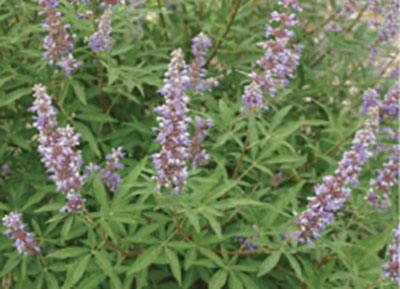
Figure 11. Chaste tree leaves and flowers (photo by S. Porse, Wikimedia Commons).
13. Chaste tree (Vitex agnus-castus; Figure 11)
Leaf: Opposite, palmate, 2–6 in. (5–15.2 cm) long, five to seven lance-shaped leaflets, gray-green, strongly scented
Fall color: Yellowish
Flower color and season: Lilac to pale-violet, pink, white; summer to early fall
Key ID characteristics: 3–6 in. (7.6–15.2 cm) cone-shaped flower clusters, small tree (15–25 ft [4.5–7.6 m] tall), bark gray and blocky
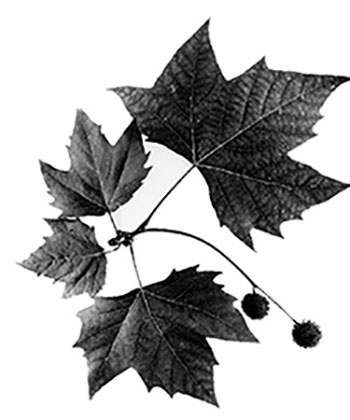
Figure 12. Fruits on a London plane tree occur in groups of two or three (photo by W.D. Brush, hosted by USDA–NRCS PLANTS Database).
14. London plane tree (Platanus × acerifolia; Figure 12)
Leaf: Alternate, simple, 6–7 in. (15.2–17.8 cm) long and 10 in. (25.4 cm) wide, with three to five lobes
Fall color: Brown
Flower color and season: Red (not showy); April
Key ID characteristics: Fruits appear in numbers of two to three per stalk
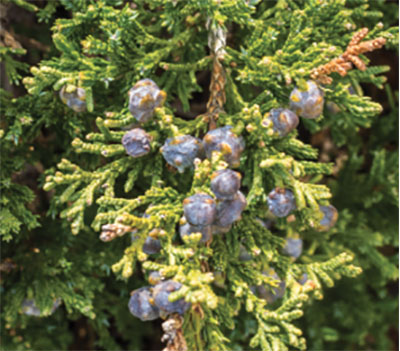
Figure 13. Chinese juniper needles and fruit (photo by F.D. Richards, flickr.com).
15. Chinese juniper (Juniperus chinensis; Figure 13)
Leaf: Scale-like needles, 0.25 in. (0.6 cm) long, gray to blue-green
Fall color: Evergreen
Flower color and season: Greenish; spring
Key ID characteristics: Bark is light brown with ridges and is furrowed, bluish berry-like fruit
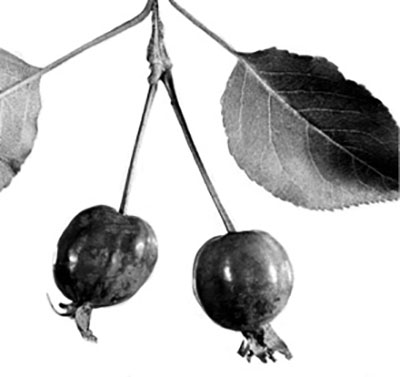
Figure 14. Crabapple fruits in the fall (photo by USDA–NRCS PLANTS Database).
16. Crabapple (Malus spp.; Figure 14)
Leaf: Alternate, simple, toothed margins, 1.5–3 in. (3.8–7.6 cm) long
Fall color: Yellow, red, purple
Flower color and season: White to red; late spring
Key ID characteristics: Reddish bark, red/yellow pomes (apple fruit) in fall, smaller tree with broad shape
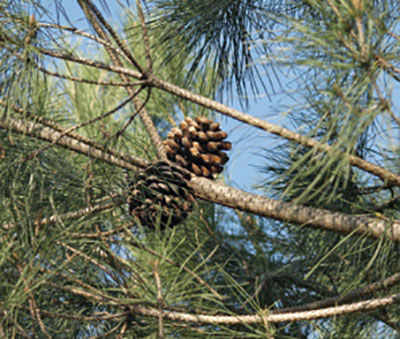
Figure 15. Italian stone pine with cones (photo by L.F. Garcia, Wikimedia Commons).
17. Italian stone pine (Pinus pinea; Figure 15)
Leaf: Two needles per fascicle, bright green, slightly twisted, 5–8 in. (12.7–20.3 cm) long
Fall color: Evergreen
Flower color and season: Greenish; spring
Key ID characteristics: Umbrella-shaped tree, often without lower branches; reddish-brown bark with deep crevices; cones are large (about 6 in. [15.2 cm] long)
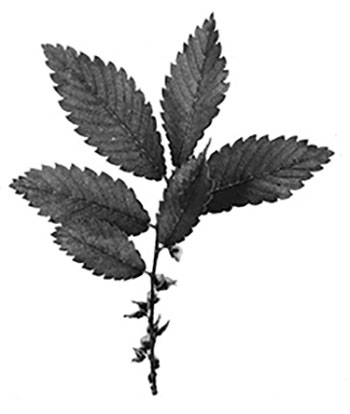
Figure 16. Lacebark elm leaves have serrated edges (photo by W.D. Brush, hosted by UDSA–NRCS PLANTS Database).
18. Lacebark elm (Ulmus parvifolia; Figure 16)
Leaf: Alternate, simple, serrated margin, up to 2.5 in. (6.3 cm) long
Fall color: Yellow
Flower color and season: Reddish-green to green; late summer to fall
Key ID characteristics: Serrated leaf with asymmetrical base, peeling bark, wire-like shape to tree
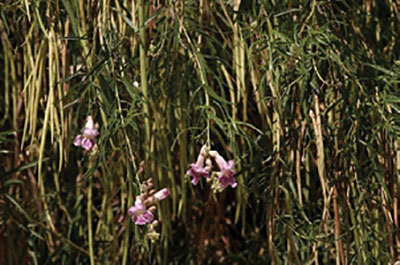
Figure 17. Desert willow flowers are trumpet-shaped and the trees have long seed pods (photo by P.J. Alexander, hosted by USDA–NRCS PLANTS Database).
19. Desert willow (Chilopsis linearis; Figure 17)
Leaf: Opposite or alternate, simple, linear, pointed at tip and at base, 4–12 in. (10.2–30.5 cm) long, willow-like
Fall color: Yellow
Flower color and season: Purple, pink, white; summer to fall
Key ID characteristics: Trumpet-shaped flowers, long seed pods
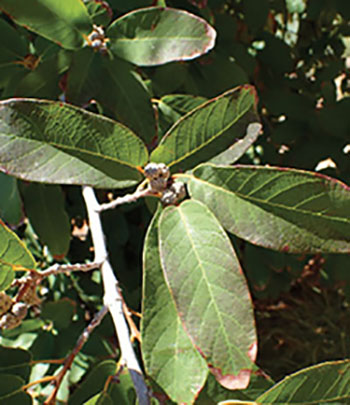
Figure 18. Mexican white oak leaves (photo by K. Ziarnek, Wikimedia Commons).
20. Mexican white oak (Quercus polymorpha; Figure 18)
Leaf: Alternate, simple, thick and leathery; leaf shape is variable, but often 2–5 in. (5–12.7 cm) long with shallow lobes; lobes often toothed at tip
Fall color: Semi-evergreen
Flower color and season: Green; spring
Key ID characteristics: Open and airy structure, multiple leaf shapes possible within one tree, raised veins on leaf underside
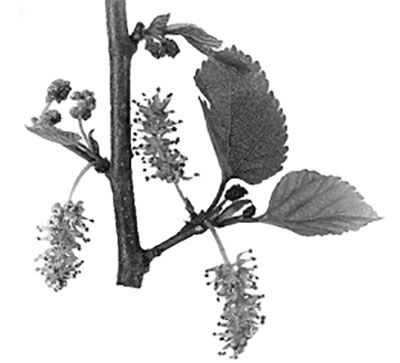
Figure 19. Mulberry leaves have serrated margins (photo by W.D. Brush, hosted by UDSA–NRCS PLANTS Database).
21. Mulberry (Morus alba; Figure 19)
Leaf: Alternate, simple, serrated margin, pointed tips, heart-shaped base, 3–6 in. (7.6–15.2 cm) long, pubescent underneath
Fall color: Green to yellow
Flower color and season: Light green; early spring
Key ID characteristics: Light green flowers with large pollen load, broad tree shape, small berry-like red fruit turning dark purple (on female plants)
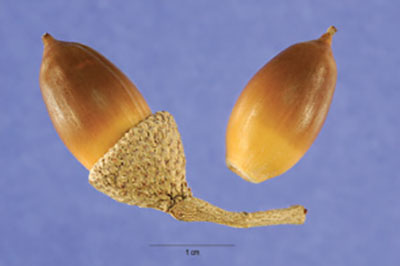
Figure 20. Southern live oak acorns (photo by S. Hurst, hosted by USDA–NRCS PLANTS Database).
22. Southern live oak (Quercus virginiana; Figure 20)
Leaf: Alternate, simple, glossy, 2–5 in. (5–12.7 cm) long, dark green
Fall color: Evergreen
Flower color and season: Yellow; early spring
Key ID characteristics: Pointed leaves, evergreen, small acorns (less than 1 in. [2.5 cm])
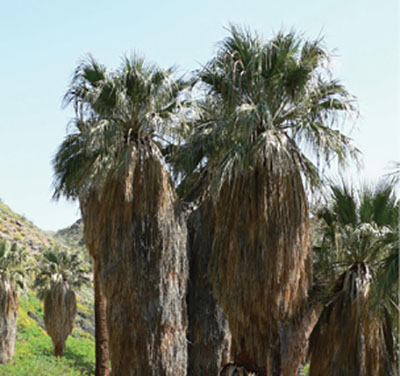
Figure 21. California fan palm trees (photo by S. Shebs, Wikimedia Commons).
23. California fan palm (Washingtonia filifera; Figure 21)
Leaf: Palmate, parallel venation, curved thorny petioles on mature palms, overall leaf has a diameter of 3–6 ft (0.9–1.8 m)
Fall color: Evergreen
Flower color and season: White; spring
Key ID characteristics: Fan-shaped fronds, fibrous and fat trunk, dark purple oblong fruit, fruit often protrudes out farther than the fronds
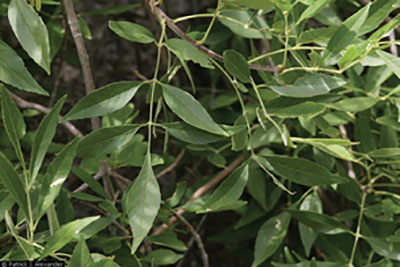
Figure 22. Arizona ash leaves are odd pinnate (photo by P.J. Alexander, hosted by USDA–NRCS PLANTS Database).
24. Arizona ash (Fraxinus velutina; Figure 22)
Leaf: Opposite, odd pinnate, medium to dark green, velvety feel, three to five narrow to oval 3 in. (7.6 cm) long leaflets
Fall color: Yellow
Flower color and season: Green; early spring
Key ID characteristics: Gray and furrowed bark, pubescent buds, gray twigs, male flowers often damaged by gall mites
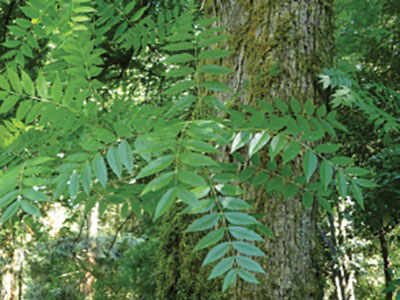
Figure 23. Chinese pistache leaves (photo by K. Ziarnet, Wikimedia Commons).
25. Chinese pistache (Pistacia chinensis; Figure 23)
Leaf: Alternate, even pinnate, 10 to 16 narrow leaflets 2–4 in. (5–10.2 cm) long, dark green, strong scent
Fall color: Red, orange, yellow
Flower color and season: Green to red; spring
Key ID characteristics: Small, green, berry-like fruit turning purpleish red in the fall; peeling gray bark has orangeish inner bark
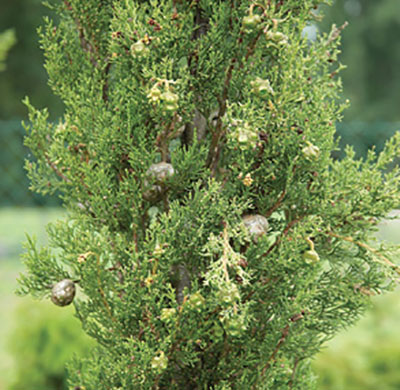
Figure 24. Italian cypress with cones (photo by W. Hagens, Wikimedia Commons).
26. Italian cypress (Cupressus sempervirens; Figure 24)
Leaf: Dark green, scale-like, 0.07–0.2 in. (0.2–0.5 cm) long
Fall color: Evergreen
Flower color and season: Yellow-green (male), light green (female); spring
Key ID characteristics: Best identified by its columnar shape (e.g., 40–60 ft [12.2–18.3 m] tall by 3–5 ft [0.9–1.5 m] wide); oval, woody cones approximately 1 in. (2.5 cm) long
27. Callery pear (Pyrus calleryana)
Leaf: Alternate, simple, rounded, 1.5–3 in. (3.8–7.6 cm) long
Fall color: Red to maroon
Flower color and season: White; early spring
Key ID characteristics: Best identified by its rounded leaves, white flowers, pungent and unpleasant flower scent, pyramidal to oval shape

Figure 25. Pecan fruit/nut (NMSU photo).
28. Pecan (Carya illinoinensis; Figure 25)
Leaf: Alternate, odd pinnate, nine to 17 leaflets 12–18 in. (30.5–45.7 cm) long, shallow serrations on leaf margin
Fall color: Yellow to brown
Flower color and season: Greenish-yellow; spring
Key ID characteristics: Best identified by the presence of pecan fruit/nut
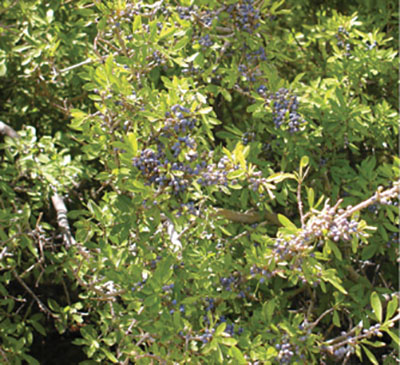
Figure 26. Blue-black fruits can be found on female New Mexico olive trees (photo by USDA–NRCS PLANTS Database).
29. New Mexico olive (Forestiera neomexicana; Figure 26)
Leaf: Opposite, simple, smooth, medium green, 1.5 in. (3.8 cm) long
Fall color: Bright yellow
Flower color and season: Green; spring
Key ID characteristics: Gray to white bark often producing indentations in main stem, short overall stature with blue-black drupes (on female plants)
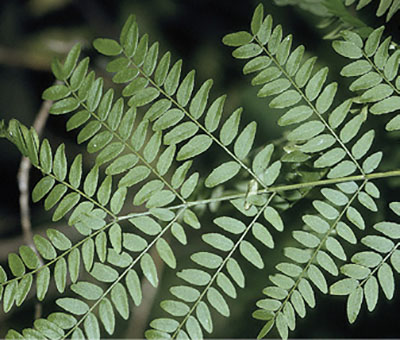
Figure 27. Honey locust leaves (photo by R.H. Mohlenbrock, hosted by USDA–NRCS PLANTS Database).
30. Honey locust (Gleditsia triacanthos; Figure 27)
Leaf: Alternate, odd pinnate (sometimes bipinnate), 5–8 in. (12.7–20.3 cm) long, yellow-green in color
Fall color: Golden yellow
Flower color and season: Greenish-yellow; late spring
Key ID characteristics: Long, dark brown, twisted seed pods in the fall
31. Arizona cypress (Cupressus arizonica)
Leaf: Opposite, scale-like, blue-green to silver, 1/16 in. (0.15 cm) long
Fall color: Evergreen
Flower color and season: Green; spring
Key ID characteristics: Leaves produce a cross shape when directly viewing top of leaf, distinctive skunk-like smell
32. Lanceleaf cottonwood (Populus × acuminata)
Leaf: Alternate, simple, 2–4 in. (5–10.2 cm) long, upper surface dark green, lower surface light gray, elliptic shape with pointed tip
Fall color: Yellow
Flower color and season: Green; spring
Key ID characteristics: Lanceolate leaves, fruits are catkins
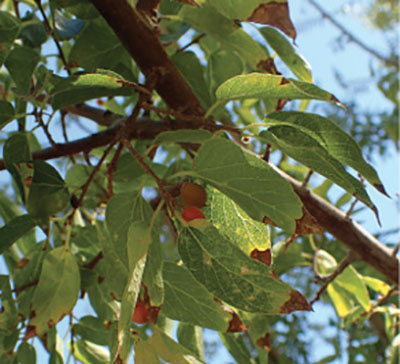
Figure 28. Netleaf hackberry leaves and fruit (photo by K. Ziarnek, Wikimedia Commons).
33. Netleaf hackberry (Celtis reticulata; Figure 28)
Leaf: Alternate, simple, 3 in. (7.6 cm) long, uneven base, rough texture
Fall color: Yellow
Flower color and season: Green; early spring
Key ID characteristics: Warty bark, wire-like tree shape, fruits are 0.25 in. (0.6 cm) and red in color
34. Mexican sycamore (Platanus mexicana)
Leaf: Alternate, simple, broad, 8 in. (20.3 cm) wide, toothed margins, medium green on upper surface, whitish on underside
Fall color: Yellow, orange, brown
Flower color and season: Green; spring
Key ID characteristics: Smooth, mottled, gray-white bark

Figure 29. Cedar elm leaves have serrated edges (photo by W.D. Brush, hosted by USDA–NRCS PLANTS Database).
35. Cedar elm (Ulmus crassifolia; Figure 29)
Leaf: Alternate, simple, dark green, rough texture, serrated margins, ovate, 2 in. (5 cm) in length
Fall color: Yellow
Flower color and season: Green; late summer to fall
Key ID characteristics: Scaly bark, drooping branches with corky ridges, oval tree shape
Glossary
Alternate: Leaves or flowers borne singly along a stem.
Bipinnate: A pinnately compound leaf in which the leaflets are themselves pinnately compound; also called “twice-pinnate.”
Catkin: A slim, cylindrical, spike-like cluster.
Compound leaf: Two or more leaflets attached to a single stem.
Drupe: A type of succulent fruit that encloses a single seed.
Even pinnate: A pinnately compound leaf with an even number of leaflets and without a terminal leaflet at the end.
Evergreen: A tree whose leaves do not change color in fall/winter and remain green year-round.
Fascicle: Clusters of needles, leaves, or branches.
Hybrid: A cross between two species, denoted by an “×”; for example, Platanus × acerifolia.
Lanceolate: Shaped like the head of a spear or lance; longer than it is wide, narrowly oval-shaped, broadest in the lower half and tapering to a tip.
Linear: Long and very narrow in shape, with sides that are mostly parallel.
Lobes: Rounded portions of a leaf margin (Figure 30).
Margin: The leaf edge.
Odd pinnate: A pinnately compound leaf with an odd number of leaflets and with a terminal leaflet at the end.
Opposite: Growing in pairs on either side of a stem.
Ovate: Oval- or egg-shaped.
Palmate: A compound leaf with several leaflets growing from the petiole, a central point (as in a palm tree; Figure 30).
Petiole: The stalk of a leaf that joins the leaf to the stem.
Pinnate: A compound leaf with several leaflets growing along an extended petiole, which may look like several small leaves (Figure 30).
Pubescent: Having hairs.
Serrate: Having teeth- or saw-like notches (Figure 30).
Simple: Undivided or unsegmented, such as a leaf not divided into leaflets (Figure 30).
Venation: The arrangement of veins on a leaf.
Whorl: A ring of leaves, flowers, or other parts that are borne on the same level on an axis (such as a stem).
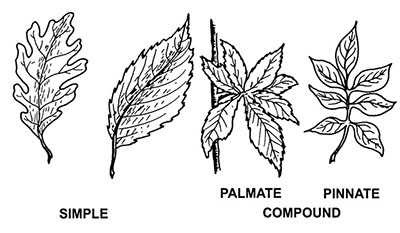
Figure 30. Simple leaves are composed of one leaf (left), while compound leaves have two or more leaflets attached to a single stem (right). From left to right, a simple leaf with a lobed margin, a simple leaf with a serrated margin, a palmately compound leaf, and a pinnately compound leaf (illustration by Pearson Scott Foresman, Wikimedia Commons).
Additional Resources
Check out the following resources to learn more about tree
identification and tree species in your area.
Arbor Day Foundation. 2019. What tree is that? [Online]. Available at https://www.arborday.org/trees/whattree/fullonline.cfm
Petrides, G.A., and O. Petrides. 1998. A field guide to western trees: Western United States and Canada, 2nd edition. Boston: Houghton Mifflin Company.
St. Hilaire, R. 2018. Landscape plants for the lower Rio Grande basin. Austin: Sentia Publishing.
Tree Plotter. 2019. New Mexico Treeplotter inventory [Online]. Available at https://pg-cloud.com/NewMexico/
For Further Reading
H-328: Selecting Ornamental Trees for New Mexico
https://pubs.nmsu.edu/_h/H328/
H-420: Establishing Fruit and Shade Trees
https://pubs.nmsu.edu/_h/H420/
H-420: Cómo sembrar árboles frutales y de sombra
https://pubs.nmsu.edu/_h/H420SP/
H-426: Shade Trees for New Mexico
https://pubs.nmsu.edu/_h/H426/
H-426: Árboles de sombra para Nuevo México
https://pubs.nmsu.edu/_h/H426_span/

Written in collaboration with the Las Cruces Parks and Recreation Department.
This work is supported by the Crop Protection and Pest Management Program (grant no. 2017- 70006-27189) project accession no. 1013838 from the National Institute of Food and Agriculture.

Miranda Kersten is a Senior Program Specialist with the urban integrated pest management (IPM) program at NMSU’s Agricultural Science Center in Los Lunas. Her work focuses on pollinator and beneficial insect conservation, monitoring beneficial insects across urban landscapes, and managing IPM research projects.
To find more resources for your business, home, or family, visit the College of Agricultural, Consumer and Environmental Sciences on the World Wide Web at pubs.nmsu.edu.
Contents of publications may be freely reproduced, with an appropriate citation, for educational purposes. All other rights reserved. For permission to use publications for other purposes, contact pubs@nmsu.edu or the authors listed on the publication.
New Mexico State University is an equal opportunity/affirmative action employer and educator. NMSU and the U.S. Department of Agriculture cooperating.
September 2019, Las Cruces, NM


